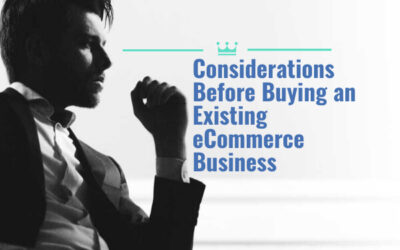How Do Ecommerce Sites Work: A Comprehensive Guide
Diving into the world of online shopping can be both exciting and overwhelming.
You may find yourself asking, “How do ecommerce sites work, and why should I care?”
Well, you’ve come to the right place. In this comprehensive guide, we’ll explore the ins and outs of ecommerce site functionality.
We’ll cover everything from the key components of an ecommerce site to the importance of understanding how they operate in today’s fast-paced digital landscape.
So, whether you’re an entrepreneur looking to launch your online store or simply a curious learner, by the end of this post, you’ll have a clear understanding of how ecommerce sites work and how to leverage this knowledge for success.
What are Ecommerce Sites?
Ecommerce, or electronic commerce, has revolutionized the way we buy and sell goods and services by leveraging internet technology.
Ecommerce sites serve as virtual storefronts, enabling businesses and consumers to interact and conduct transactions with ease.
I’d like to share a personal anecdote that showcases the incredible potential of ecommerce.
A few years ago, my niece, a talented artist, decided to start her own small business selling custom, hand-painted phone cases. At first, she relied on word-of-mouth marketing, selling her products to friends and family.
However, once she set up her ecommerce site, her business skyrocketed.
Suddenly, she found herself reaching customers from all over the world, and her venture grew rapidly.
This real-life example highlights the transformative power of ecommerce for small businesses.
Now, let’s delve into the various types of ecommerce businesses and the essential components of an effective ecommerce site.
Types of ecommerce businesses
Ecommerce businesses primarily fall into four categories:
- Business-to-Consumer (B2C): B2C ecommerce encompasses businesses selling products or services directly to individual consumers. Online retailers like Amazon and Walmart exemplify this model.
- Business-to-Business (B2B): B2B ecommerce takes place when businesses sell products or services to other businesses. Think of wholesalers, manufacturers, and distributors engaging in online transactions to support their operations—Alibaba and ThomasNet are prime examples.
- Consumer-to-Consumer (C2C): In the realm of C2C ecommerce, individual consumers buy and sell products or services without traditional retailer involvement. Popular platforms like eBay, Craigslist, and Etsy facilitate these transactions.
- Consumer-to-Business (C2B): Though less common, C2B ecommerce is growing in popularity, with individual consumers offering goods or services to businesses. Freelancing platforms like Upwork or Fiverr enable businesses to hire freelancers for specific tasks or projects.
Key components of ecommerce sites
An effective ecommerce site comprises five key components:
- Product Listings: Detailed product descriptions, often accompanied by high-quality images or videos, provide crucial information like price, features, and availability, empowering consumers to make informed purchasing decisions.
- Shopping Cart: A vital element, the shopping cart allows customers to select and store items for purchase. It streamlines the process, enabling customers to review their selections, make modifications, and proceed to checkout with ease.
- Payment Gateway: Secure payment gateways are indispensable for processing online transactions. They serve as intermediaries between the customer’s bank and the ecommerce site, ensuring the safe and efficient transfer of funds. PayPal, Stripe, and Square are popular choices.
- Customer Account Management: Many ecommerce sites offer customers the option to create personal accounts, where they can manage orders, view purchase history, and save shipping and payment information for faster checkouts, enhancing the overall customer experience.
- Order Management and Fulfillment: Efficient order management and fulfillment processes are the backbone of an ecommerce site’s success. From tracking inventory levels to processing orders, packaging products, and coordinating shipping and delivery, advanced systems and automation can streamline these processes and ensure customer satisfaction.
By understanding the different types of ecommerce businesses and the key components of ecommerce sites, you can create a robust and efficient site tailored to your target audience’s needs.
Just like my niece did with her custom phone case business, you too can harness the power of ecommerce to propel your venture toward success.
Why Ecommerce Sites Matter
The astronomical growth of online shopping and digital sales has transformed the retail landscape. Today, it’s hard to imagine life without the convenience of ecommerce sites at our fingertips.
As businesses adapt to this digital revolution, it’s crucial to recognize the importance of ecommerce sites and their undeniable advantages.
Growth of Online Shopping and Digital Sales
The rise in digital sales has had a profound impact on how we shop and do business. This trend shows no signs of stopping, making ecommerce sites an indispensable part of modern commerce.
As someone who has been in the industry for over 15 years, I’ve witnessed firsthand how businesses that embrace ecommerce continue to thrive and grow exponentially.
Advantages of Ecommerce Sites
Wider Customer Reach
Going digital means breaking free from geographical limitations, allowing businesses to tap into global markets. I once consulted for a small artisanal soap company that expanded its online presence, and they were astounded by the influx of international orders.
This wider reach significantly boosted their revenue and opened doors to new opportunities.
Lower Operational Costs
Ecommerce sites often come with fewer overhead expenses compared to traditional brick-and-mortar stores. By reducing the need for physical retail space, businesses can allocate resources more effectively and focus on growth.
Personalized Shopping Experiences
It’s no secret that customers love a tailored experience. Ecommerce sites let businesses cater to individual preferences by leveraging customer data, enhancing satisfaction, and fostering long-term loyalty.
Data-driven Decision Making
Ecommerce sites generate a treasure trove of data that businesses can use to optimize their strategies, products, and marketing efforts. The ability to make informed decisions based on customer behavior, preferences, and trends is a game-changer in today’s competitive market.
Importance of Effective Ecommerce Site Management
A well-managed ecommerce site is the key to unlocking the benefits of online shopping.
It encompasses seamless user experiences, optimized product listings, streamlined order management and fulfillment processes, and data-driven improvements.
In a nutshell, ecommerce sites matter because they allow businesses to:
- reach a wider audience
- cut operational costs
- offer personalized shopping experiences
- and make data-driven decisions
As the digital world continues to evolve, understanding the importance of ecommerce sites and effective management is essential for businesses to stay ahead of the curve and thrive in the digital age.
How to Implement an Ecommerce Site
Setting up a successful ecommerce site is no small feat, but with the right approach, you’ll be on your way to online success.
Let’s dive into the essential steps to launch an ecommerce site that stands out in the competitive digital marketplace.
Choosing the Right Ecommerce Platform
Hosted vs. Self-hosted Solutions
Hosted solutions like Shopify and BigCommerce take care of server maintenance and security, while self-hosted options such as WooCommerce and Magento offer greater control and customization.
When I helped a local boutique transition to ecommerce, they chose Shopify for its user-friendliness and extensive app ecosystem.
Key Features to Consider
Assess each platform’s offerings, including:
- product management
- payment processing
- scalability
- and customer support
Top Ecommerce Platforms and Their Benefits
Shopify is known for its ease of use, while BigCommerce has powerful built-in features. Magento allows for extensive customization, and WooCommerce works seamlessly with WordPress websites.
Designing a User-friendly Site
Mobile Responsiveness
Don’t overlook mobile optimization, as more customers now shop using their smartphones and tablets.
Easy Navigation
Keep your site well-structured with intuitive menus and search functionality, so customers can quickly find what they’re looking for.
Clear Calls-to-action
Guide your customers through the purchasing process with prominent and clear calls-to-action.
High-quality Product Images and Descriptions
Invest in professional images and write compelling descriptions to help customers make informed decisions.
Implementing Secure Payment Methods
Importance of SSL Certificates
An SSL certificate ensures secure transactions and builds customer trust by encrypting sensitive data.
Payment Gateway Options
Choose a reputable payment gateway like PayPal, Stripe, or Square to process transactions efficiently and securely.
PCI Compliance
Stay PCI compliant to protect customer data and minimize security breaches.
Managing Inventory and Fulfillment
Inventory Tracking and Management Systems
Use inventory management software to monitor stock levels and track orders.
Shipping and Logistics Solutions
Partner with trustworthy shipping providers and implement logistics solutions to ensure timely deliveries.
Returns and Refunds
Offer hassle-free returns and refunds processes with clear policies to maintain customer satisfaction.
Optimizing for Search Engines (SEO)
On-page SEO Elements
Improve search engine rankings by optimizing title tags, meta descriptions, headers, and content with relevant keywords.
Keyword Research and Implementation
Identify high-traffic, low-competition keywords and incorporate them into your content to attract potential customers.
Site Speed and Performance Optimization
Boost site performance by optimizing images, enabling caching, and minimizing redirects for improved load times and user experience.
Marketing Your Ecommerce Site
Email Marketing
Build an email list and engage customers through promotions and exclusive deals.
Social Media Marketing
Connect with your target audience on social media to showcase products and drive traffic to your site.
Content Marketing
Publish valuable content, like blog posts and how-to guides, to attract potential customers and establish your brand as a niche authority.
Paid Advertising
Use paid advertising campaigns, such as Google Ads and Facebook Ads, to reach a larger audience and drive targeted traffic to your site.
By following these steps and focusing on exceptional user experiences, you’ll be well on your way to launching a successful ecommerce site that drives sales and propels your business forward.
Conclusion
In conclusion, we’ve delved into the ins and outs of ecommerce site functionality, covering everything from selecting the right platform and designing a user-friendly site to secure payment processing and effective marketing strategies.
Understanding and implementing these critical components is the key to creating a thriving online business.
Now that you’re equipped with this valuable knowledge, it’s time to put it to work and make your mark in the ecommerce world. Embrace the opportunity to leverage these insights and create an outstanding online shopping experience for your customers.
Remember, success is within reach when you put in the effort and stay committed to excellence.
So, go forth and conquer the ecommerce space!

Wayne is an experienced ecommerce operations expert with over 15 years in the industry. He has a background in supply chain management and project management and has worked for multinational ecommerce companies. With a strong understanding of inventory management, shipping and logistics, and process optimization, Wayne is committed to helping businesses run more efficiently and effectively. He has a background in Six Sigma methodology and is always seeking new and innovative ways to streamline processes and improve results. When he’s not working on operations, you can find Wayne cooking up a storm in the kitchen, hiking in nature, or spending time with his family.




